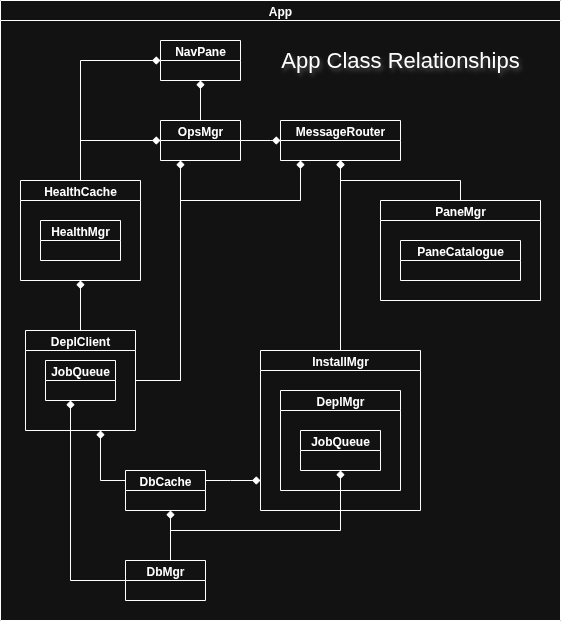Introduction
You know that saying, “A picture is worth a thousand words.”? In programming, I’d argue it can be worth a thousand lines of code…
The Problem
This blog post comes out of my current project, Db4E, a Monero mining dashboard for deployment, operation and real-time analytics. The project was humming along, progress was good, then a strange bug appeared: When I queried my database cache for a list of P2Pool deployments I was getting duplicates in the list. This was particularly puzzling because the list was constructed from a dictionary, using a values() call. It shouldn’t be possible to get two of the same values, but there they were.
The Root Cause
When I drilled into it, I realized that my application had two (or more?) copies of my database cache object. I hadn’t centralized ownership of the cache, so different parts of the system were instantiating their own.
Refactoring the Code
I started on a cleanup and refactoring exercise: moving classes around, passing in references to them, changing the constructor parameters. It was confusing, I kept getting lost and confused and I kept starting over.
My project currently has 32 classes, so this wasn’t completely trivial. After creating another mess, I took a step back. Well, I took quite a few steps: I walked around the block and thought about it.
The Solution: Diagrams
I realized that what I needed was a class diagram showing the relationships between classes. I needed something simple that just showed me if a class was contained within another class, or if I was passing a reference instead.

With this blueprint, the implementation was easy.
Conclusion
Pictures are worth a thousand words. If you find yourself getting bogged down, looking at the code, consider creating a diagram. It’s like a blueprint!
Afterword: Draw.io
I used a free, browser based tool: Draw.io. To create the diagram. I strongly recommend it. It has the following features:
- Free
- Built in version control
- Saves anywhwere, including Google Drive
- Exports to many formats
If you’re stuck in your own project, try drawing it out. Sometimes the shortest path through a mess of code is with a pencil and a picture.